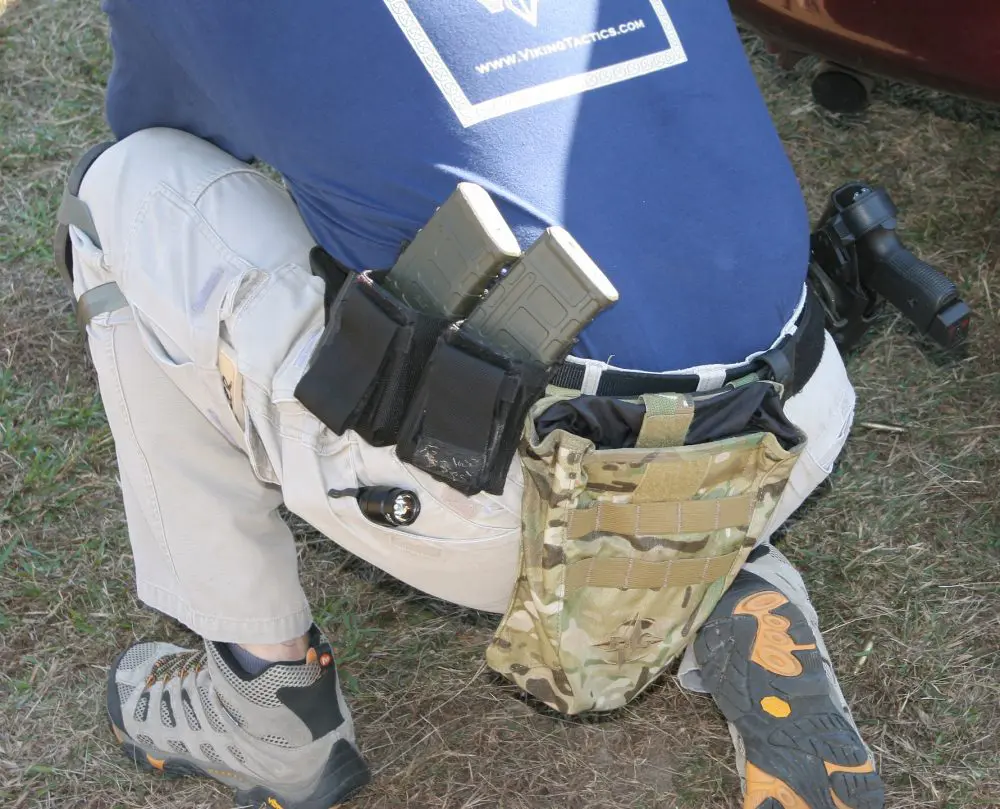On October 5th, just days after a lunatic gunned down 58 people and wounded over 500 more at a country music festival in Las Vegas, House Minority Leader Nancy Pelosi (D-CA) announced that “she certainly hope(d)” a ban on bump-fire stocks would start the U.S. swiftly down the slippery slope of restrictive gun regulation.
The Las Vegas atrocity, in which the shooter evidently used such stocks to increase his rate of fire, and at least in theory increase the death toll, has made these stocks a prime target for gun-ban zealots.
But not only them—many Republicans in Congress, even ones who have for years claimed to be “pro-gun,” have signaled their willingness (indeed their eagerness, in some cases) to go along with such a ban.
Perhaps they are somehow unaware of Pelosi’s “slippery slope” ambitions, or perhaps they don’t care. Even the NRA has decided to throw these stocks under the bus, although not by legislative ban, but by executive branch regulation.
Some Republicans have gone so far as to “blame” the Obama Administration for not banning the stocks, because it was during his Presidency that the Bureau of Alcohol, Tobacco, Firearms, and Explosives (BATFE) determined that the stocks break no federal gun laws, which renders them out of the reach of any regulation BATFE could impose (not that BATFE has much history of letting that stop them).
And that poses a problem for the NRA-endorsed course of action. Either their stated desire of “increased regulation” of such stocks is impossible, or they are proposing to empower BATFE to impose regulations beyond those imposed by federal law. Indeed it would empower that agency to, in effect, make its own gun laws.
But even if BATFE does again determine (correctly) that it has no authority to regulate the stocks, we still have a problem.
Certainly anti-gun Democrats in Congress would not in such a scenario throw up their hands and say, “OK, I guess there’s nothing we can do about bump-fire stocks.” They have shown no willingness to forego the legislative route and leave it to BATFE anyway, even without BATFE having yet ruled (again) on the stocks.
And in the wake of such a determination on the part of BATFE, Republicans who have spoken in support of strict new rules regarding the stocks would have a hard time justifying their resistance to legislative action to ban them. Can we really count on them to hold firm in the face of the inevitable outrage?
The problem goes still deeper than that. One can hardly continue to argue that the Second Amendment’s “shall not be infringed” should be taken to actually mean “shall not be infringed” if one also argues that, “Well, that infringement is OK.” To do so is to actively facilitate Pelosi’s slippery slope dream.
Granted, all the anti-gun groups gleefully whipping up support for a ban on the stocks have their own logical inconsistencies to deal with (although that has never much troubled them).
After years of arguing that semiautomatic, detachable magazine-fed rifles—the so-called “assault weapons” they have demonized for decades—are in effect no different from fully automatic firearms, they are now arguing that a device that makes them somewhat more like fully automatic guns makes them far more dangerous.
The rabidly anti-gun Violence Policy Center has even argued that semiautomatic “assault weapons” are more deadly than actual machine guns, because semiautomatic fire is more accurate than fully automatic spraying of bullets: “They are arguably more deadly than military versions, because most experts agree that semiautomatic fire is more accurate—and thus more lethal—than automatic fire.”
Of course, this has not stopped VPC from directly contradicting itself now: “These devices have absolutely no legitimate purpose and when attached to a semiautomatic assault rifle make a weapon originally designed for anti-personnel use even more lethal.”
The logical inconsistencies play into the gun-ban zealots’ hands. When, after a bump-fire stock ban fails to have any noticeable effect on violence committed with guns (and it won’t, as should be obvious given that the Las Vegas massacre seems to be the first in which such stocks were used. In addition, a quick YouTube search turns up about a dozen videos showing how to construct a homemade bump-fire stock.), they can argue this shows what really need to be banned are “assault weapons” and “high-capacity” magazines.
And now, Republicans and the NRA have already undermined “shall not be infringed” as a defense against such an abomination.
Las Vegas doesn’t prove we need to ban, or even merely “regulate,” bump-fire stocks. It proves we must never surrender so much as a millimeter of the Constitutional high ground of “shall not be infringed,” because every millimeter surrendered is another millimeter of beachhead from which to launch the next infringement.
A former paratrooper, Kurt Hofmann was paralyzed in a car accident in 2002. The helplessness inherent to confinement to a wheelchair prompted him to explore armed self-defense, only to discover that Illinois denied that right. This inspired him to become active in gun rights advocacy.






